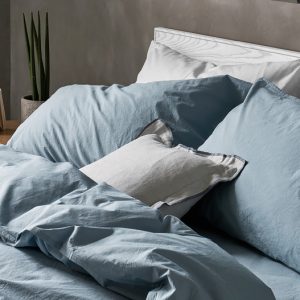Zippers, also known as zip fasteners, are a common fastening device used to bind fabric edges or other flexible materials. They are widely employed in various items such as clothing, bags, and camping gear. The zipper’s functionality and convenience have made it an essential component in modern design, revolutionizing how we secure our belongings and wearables.
History of the Zipper
The history of the zipper dates back to the mid-19th century. The first patent for a device resembling a zipper was granted to Elias Howe in 1851, but it did not gain commercial success. In 1893, Whitcomb L. Judson patented a more practical version called the “Clasp Locker,” showcased at the Chicago World’s Fair. However, it wasn’t until Gideon Sundback improved the design in 1913 that the modern zipper emerged. His design featured two rows of interlocking teeth operated by a slider, leading to its widespread adoption in fashion and other industries.
How Zippers Work
A zipper consists of two rows of teeth (or elements) interlock when a slider is moved along them. The slider has a Y-shaped channel that meshes or separates the teeth depending on its direction. The teeth can be made from various materials, including metal, plastic, or nylon, and they come in different styles and sizes.
Types of Zippers
Zippers come in several types, each designed for specific applications:
– Coil Zippers: Made from continuous coils of nylon or polyester, these zippers are lightweight and flexible, ideal for garments and bags.
– Metal Zippers: These zippers have metal teeth and are commonly found in jeans and jackets due to their strength and durability.
– Invisible Zippers: Designed to be hidden within seams, these zippers are perfect for formal wear where a clean finish is desired.
– Open-End Zippers: These zippers can separate and are typically used in jackets and coats.
– Two-Way Zippers: Featuring two sliders, these allow opening from both ends and are often used in outdoor gear like tents.
Materials Used in Zipper Production
The materials used to manufacture zippers significantly affect their functionality and durability:
– Metal: Commonly made from brass or aluminum, metal zippers offer strength but can be heavier than plastic alternatives.
– Plastic: Molded plastic zippers are lightweight and resistant to corrosion, making them suitable for outdoor gear.
– Nylon: Known for flexibility and ease of use, nylon zippers are often found in lighter garments.
Applications of Zippers
Zippers are ubiquitous in everyday items:
– Clothing: From jackets to pants, zippers provide a secure closure that is easy to operate.
– Bags: Backpacks, purses, and luggage often feature zippers for easy access and security.
– Camping Gear: Tents and sleeping bags utilize zippers for functionality and weather resistance.
Maintenance of Zippers
To ensure longevity, proper maintenance is essential:
– Cleaning: Regularly clean zippers with mild soap and water to prevent dirt buildup.
– Lubrication: Use zipper lubricant or wax to keep the slider moving smoothly.
– Repairing: If a zipper becomes stuck or misaligned, gently realigning the teeth or replacing the slider can often resolve the issue.
Innovations in Zipper Design
Recent advancements have led to innovations such as waterproof zippers for outdoor clothing and self-locking mechanisms that prevent accidental openings. These developments enhance usability while maintaining style.
Conclusion
Zippers are more than just functional fasteners; they represent a significant advancement in design technology that has transformed various industries. Their versatility allows them to be used in countless applications while providing ease of use and reliability. Understanding the different types of zippers and their applications can help consumers make informed choices about their use in clothing and accessories.
Related Questions
What materials are commonly used to make zippers?
Zippers can be made from metal (brass or aluminum), plastic (molded plastic), or nylon. Each material offers different benefits regarding durability and weight.
How do you fix a stuck zipper?
To fix a stuck zipper, gently pull on the fabric near the zipper while trying to move the slider up or down. If this doesn’t work, inspect for any misaligned teeth or debris that may be causing the issue.
Are there waterproof zippers available?
Yes, there are waterproof zippers designed specifically for outdoor gear like raincoats and tents to prevent water from entering through the zipper opening.
What is an invisible zipper?
An invisible zipper is designed so that its teeth are hidden behind the tape when closed, making it ideal for garments where you want a seamless look without visible fasteners.
How do you choose the right zipper for a sewing project?
When choosing a zipper for a sewing project, consider factors such as length, type (coil or metal), color compatibility with your fabric, and whether you need an open-end or closed-end zipper based on your garment’s design.













